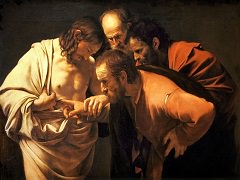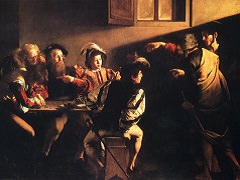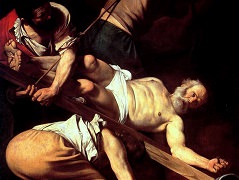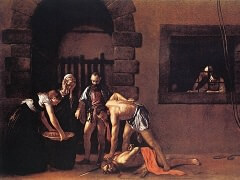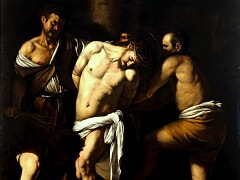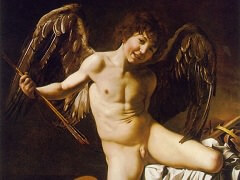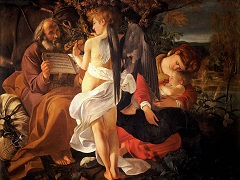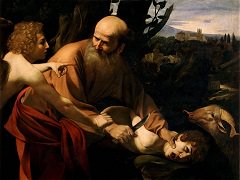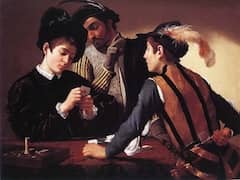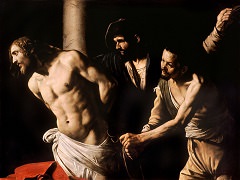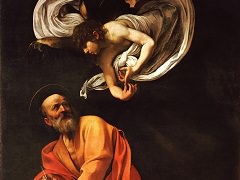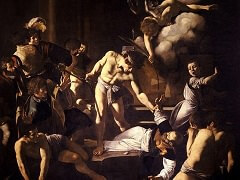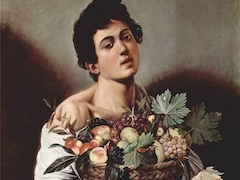Saint Jerome in Meditation, 1606 by Caravaggio
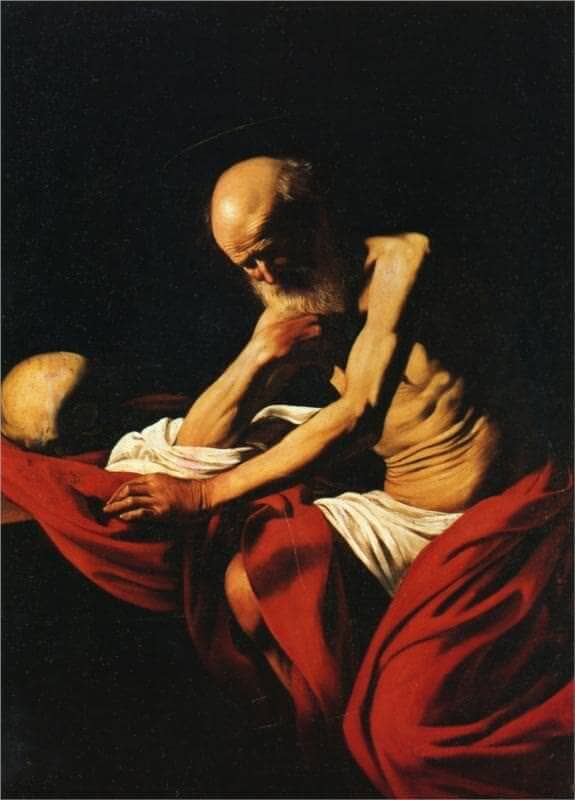
Only acquired from Italy by its present owners in 1917, the Montserrat St. Jerome is possibly the picture of similar measurements listed in the Giustiniani inventory of 1638. Caravaggio painted the subject of St. Jerome quite often [there are three surviving works and five others mentioned in the sources] but it is not known whether he did so through choice or the exigencies of commissions.
The subject certainly gave him an opportunity to portray the folds and wrinkles of ageing male flesh, but one should not underestimate St. Jerome's wider and more specifically religious appeal for contemporaries. He was a mystic and hermit whose stern asceticism helped to kindle one strand of Counter-Reformation fervour, as witnessed by the increase in the number of Hieronymite hermits during the period, but he was also a great scholar who had translated the Bible into Latin and ranked, as one of the Four Fathers of the Church, almost as a second founder of the Christian religion. Furthermore, the graphic power of his message, with its insistence on the contemporaneity of the Gospels, must have seemed to the religious very much akin to Caravaggio's paintings: 'We have to translate the words of Scripture into deeds; instead of talking of holy things we must enact them.' The saint's pose in the picture recalls that of St. Matthew in the second version of St. Matthew and the Angel.

